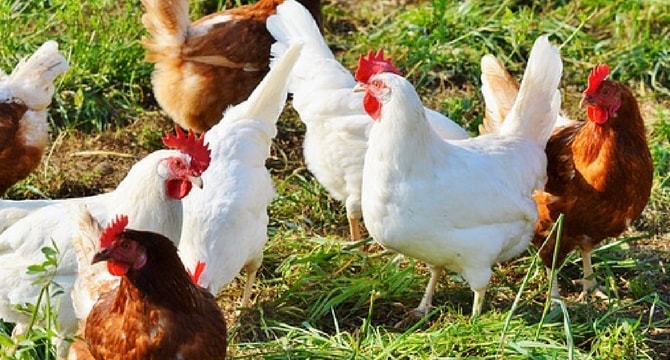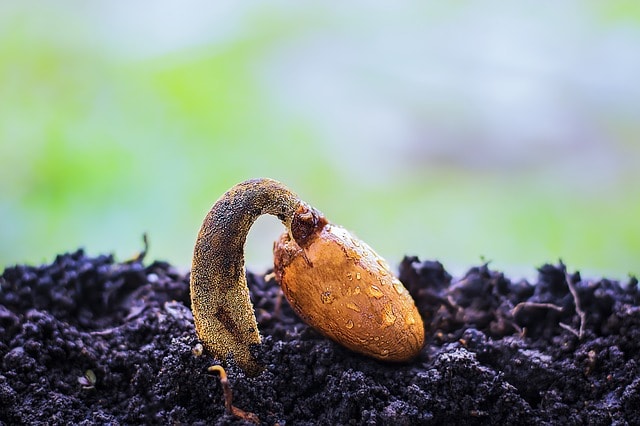Aloe Vera Farming Business Plan – How To Start & Profit Margin

The world is heavily into ‘organic’ nowadays, due to the fear of acquiring all manner of illnesses, conditions or diseases via the usage of chemical-laden drugs, cosmetics, inorganically grown food, etc. Therefore, if you were keen to enter the world of business and trade, you would do well to launch an Aloe Vera farming business.
Aloe vera farming business is the cultivation of aloe vera plants for the purpose of extracting the gel from the leaves to be used in various cosmetics and medicinal products.
Apart from being a super food laden with minerals and vitamins, this plant is useful as an antibiotic and anti-fungal medicine too. Huge business opportunity is here, you have to follow a profitable business plan in order to achieve success in this business. In this article, I have crafted important information and business plan sample on how to start aloe vera farming business.
Types of aloe vera farming
There are three main types of aloe vera farming:
- wild harvesting,
- commercial farming,
- and home gardening.
Wild harvesting is the process of collecting aloe vera plants from their natural habitats. This includes forests, deserts, and other areas where the plant grows wild. Commercial farming is the process of growing aloe vera for commercial purposes. This includes large-scale agriculture and horticulture. Home gardening is the process of growing aloe vera for personal use. This can be done on a small scale in a home garden or on a larger scale in a community garden.
Commercial Plants
Now, several varieties of Aloe Vera grow across the globe.
- However, only certain species are great for the commercial arena. They include IEC 111271, IEC 111269, IC111280, AL-1, etc.
- If you reside in India, you might consult the National Botanical and Plant Genetic Resource associated with the Indian Council of Agricultural Research (ICAR).
Take a Loan/Subsidy
Every kind of business, whether big or small, requires an initial investment.
- If you are not able to handle the finances on your own, you may take help from governmental agencies.
- They are always ready to help micro-, small- and medium-scale enterprises with interest-free loans or subsidies on loan amounts.
- In India, the Khadi Gramodyog provides ready assistance too.
An Ideal Climatic Conditions for Aloe Vera Farming
- Check if your region offers a dry climate with minimal rainfall or a warm humid one.
- If the answers are in the affirmative, your plants will grow well.
- Wherever the annual rainfall remains between 50 mm and 300 mm, Aloe Vera plants are bound to flourish!
- Aloe Vera plants cannot tolerate extremely cool conditions.
- They cannot survive in ‘frosty’ weather or in winter.
Selecting the Land
You do not require vast tracts of land to grow these plants. A two-acre field should suffice in the initial stages.
- The soil may be sandy (as in the coastal regions) or loamy (as on the plains).
- Even well drained, black cotton soils prove to be highly suitable. These heavy soils with medium fertility encourage rapid growth.
- Aloe Vera plants are not sensitive to the high presence of potassium or sodium salts in the soil.
- They are capable of tolerating a higher pH (8.5), unlike many other plants.
- Whatever be the type of soil present on your land, it should not allow water to stagnate.
- In the absence of water logging, Aloe Vera plants exhibit higher foliage.
- It would help to have your land at a slight height from the ground level. This will prevent the stagnation of rainwater.
Preparing the Land
It would be ideal to schedule your Aloe Vera farming prior to the monsoons, if in India. In other words, you should plow the soil before the beginning of the rainy season.
- Ensure that your plowing is so thorough that the soil particles appear fine and well separated from one another.
- It is imperative to keep this soil well drained too.
- Maintaining furrows and ridges should make the field ideal for plantation.
- Test the pH and the salt contents of the soil. The former should be around 8.5, while the latter should be in the higher range.
- Would you like to increase the fertility of the soil? Well, then, go in for 10 to 15 tons of farmyard manure per hectare.
- Do the same thereafter, every subsequent year.
- Keep using compost throughout every year.
- Then again, you may opt for a ratio of 50:50:50 kg per hectare of sodium, phosphorus and potassium salts, to serve as a basal dose.
- You must keep the soil well irrigated, but not overfed with water.
- The plants crave for water immediately after they ground themselves firmly into the soil, as well as, throughout the summer season.
- Their succulence helps them to survive in ‘waterless’ conditions during the winter season.
Propagation of Aloe Vera Plants
Aloe Vera plants do not produce seeds for planting directly into the soil. Instead, you must propagate them.
- When you observe the parent plant carefully, you should be able to observe some ‘baby’ plants growing from it.
- These are the offshoots or offsets, commonly known as Aloe Pups.
- They share the same root system as the parent plant does.
- Whenever you see that the Pup has grown to one-fifth the size of its parent, or has a few sets of leaves sprouting from it, you may remove it.
- Examine it carefully, remove the dirt around the base, and decide the ideal place for separating it from the parent plant.
- The Pup should exhibit a complete root system, after you detach it.
- Do use a clean knife, for you do not want your ‘baby’ to become contaminated!
- Plant this Pup in a mixture of potting soil and sand.
- Water it only after a week.
- When it is of the right size, move it to the field.
- Another method is to dig out the underground rhizome.
- Cut it to a length of 12 to 15 cm.
- Ensure that this stem has two or three nodes on it, at least.
- Place it in a sand bed, similar to the placement of a root in soil.
- Alternatively, grow it in a container.
- When sprouts appear, take out the plant and allot it an appropriate place in your field.
- You may use root suckers too, instead of the rhizome, by digging them out from the parent plant.
- Plant these root suckers, such that the separation lies in the 50 x 45 cm range.
- Whatever you use, ensure that two-thirds of the propagated plant remains underground.
Protecting the Plants
Aloe Vera plants have their own enemies.
- One is the Mealy Bug, wherein the leaves become spotted. This is a fungal disease.
- Once a week, spray 0.2% dithane M-45 onto the plants.
- Spraying of an aqueous solution of 0.2% of Malathion and 0.1% parathion keeps unwanted plants away.
- You may remove the weeds manually too, during the first year.
- During subsequent years, you may adhere to two weeding sessions and light hoeing throughout the year.
- Keep the soil healthy via earthing up, spading, etc.
Harvest your Plants
Wait for eight months or so, and see the results! They should be excellent, provided you have followed all the instructions to a T! True, the harvesting is labor-intensive, but well worth the effort!
- You will know that the time is exactly right, when you view fleshy and thick leaves all over the field.
- You may harvest the plants thrice in a year.
- You cannot use machines or tools for harvesting; it has to be manual in nature.
- It is important that the broken rhizomes remain in the soil, for re-sprouting.
- Then again, you must remove just three or four leaves from each plant, during the harvest season.
- This is for allowing the leaves to regenerate from these scars.
- Conduct the harvest only during the morning and evening hours.
During the first year, you may witness a yield of 50 or 55 tons of fleshy and thick Aloe Vera leaves from a plantation measuring one hectare. In fact, even if you obtain a conservative 40 tons, it is good. Cover up the so-called loss by selling the side suckers from 50% to 60% of your plants every year. You need have no fears for the next four years, for the yield is only bound to become better and better. On an average, two acres of land yield 8,000 to 10,000 kg of Aloe Vera plants.
Pricing and Profit in Aloe Vera Farming Business
How to make profit with aloe vera farming?
Aloe vera farming can be profitable in many ways as given below:-
One way to make profit with aloe vera farming is to grow the plants for the purpose of extracting the gel from the leaves. The gel can be used in a number of ways including as a natural remedy for skin conditions, as a dietary supplement, or as an ingredient in cosmetics.
Another way to make profit with aloe vera farming is to grow the plants for the purpose of selling the cut leaves. Aloe vera leaves can be used in a number of ways including as a decoration, as a green addition to a bouquet, or as a natural air freshener.
Target the pharmaceutical, cosmetic and herbal products establishments via your marketing strategies. In fact, you may contact every company in person, carrying along a few samples with you. At the same time, promote and sell your plants online through shopping giants like Amazon, Flipkart, etc. You may create your own website too, for reaching out to consumers directly, without needing intermediaries.
You should be able to earn anywhere up to twenty thousand rupees, or even more, for every ton of Aloe Vera, in the Indian marketplace. Thus, even with a minimal investment of 40,000 to 50,000 rupees at the initial stage, you stand to walk away with a huge profit, year after year. If you are in India, lakhs of rupees should work their way into your pockets.
You may opt to sell the leaves directly. Currently, the Indian marketplace is ready to pay anywhere between eight to ten lakhs of rupees for 40 to 45 tons of thick and succulent leaves! Think of how much you can earn two years later, when the yield goes up to 60 tons or so!
In case, you opt to process the plants for juice, without going in for any brand name, you stand to earn over 20-lakh rupees as annual gains! You may even purchase more Aloe Vera leaves from other farmers and process them at your processing plant. This should fetch you handsome profits too!
Grow Your Business
Use online marketing to grow your aloe vera business. You can create a website and sell online. You can also take export orders from different country.
Many people buy aloe vera juice for health benefits. You can target those audience easily with the help of social media platforms like Facebook and Instagram.
Export of Aloe Vera
At the beginning, you should focus in your own country market. As your business grows, you can opt for import export license and start exporting to other countries. Some countries where you can export aloe vera are South Africa, Sri Lanka, Pakistan, USA and UK. Trends shows that aloe vera is in high demand in these countries. Arabian countries in also one important market for aloe vera products.
FAQs
Some potential benefits of farming aloe vera include improving soil health, providing food and shelter for wildlife, and helping to fight climate change. Aloe vera is also a popular ingredient in many skincare and health products, so there is a potential market for the crop.
A warm climate with lots of sun is best suited for aloe vera farming.
The best type of soil for aloe vera farming is a sandy loam soil.
Aloe vera farming requires a lot of water, especially during the summer months. irrigation is necessary to keep the plants healthy and hydrated.
There are no specific fertilizer requirements for aloe vera farming, but a general-purpose fertilizer with a balanced nitrogen-phosphorus-potassium (NPK) ratio can be used.
There is no definitive answer to this question as it depends on the individual plant and the growing conditions. However, it is generally advised to harvest aloe vera every few months to ensure that the plant remains healthy and vigorous.
There are many marketing channels for aloe vera products. Some companies sell their products online, through mail order, or in natural food stores. Others sell their products in supermarkets, drugstores, or mass merchandisers. And still others sell their products through door-to-door sales or multilevel marketing.
The storage requirements for aloe vera products vary depending on the specific product. Some products may need to be refrigerated, while others may need to be stored in a cool, dry place.
There are no specific transportation requirements for aloe vera products. However, it is important to keep the products refrigerated or in a cool, dark place to maintain their quality.
There are no specific export requirements for aloe vera products. However, all products exported from the United States must meet the applicable requirements of the destination country.






